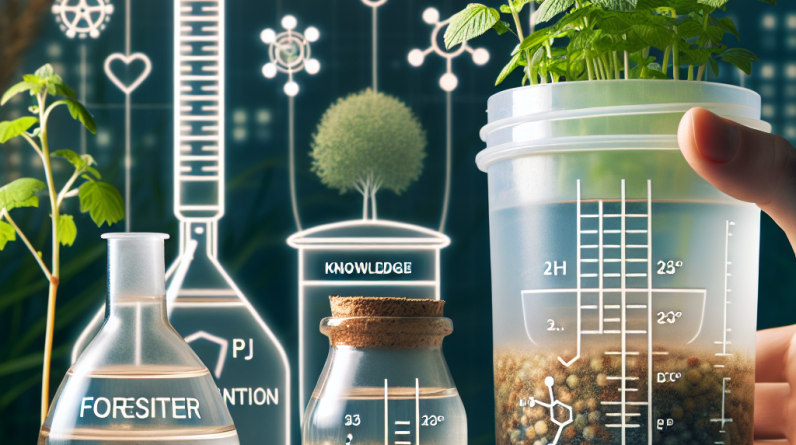
1. Understanding Hydroponic Nutrient Solutions
What is a Hydroponic Nutrient Solution?
A hydroponic nutrient solution is a carefully formulated mixture of nutrients dissolved in water that nourishes plants grown without soil. It provides essential macro and micronutrients directly to the roots, promoting healthy growth and high yields. In 2025, optimizing this solution is crucial for efficient hydroponic farming and sustainability.
This solution acts as the plant’s lifeline in a soilless environment, ensuring they receive the right balance of nutrients. Many growers prefer specific formulations tailored to plant types, growth stages, and environmental conditions. As the hydroponic industry expands in 2025, the importance of a precise nutrient solution cannot be overstated.
Understanding how this solution functions allows growers to troubleshoot deficiencies and optimize plant health effectively. Whether youâre running a small urban farm or a large commercial setup, mastering hydroponic nutrient solutions is foundational.
History and Evolution of Hydroponic Nutrients
The concept of soilless cultivation dates back to the ancient civilizations, but the modern hydroponic nutrient solution emerged in the mid-20th century. Initially, formulations were simple, but advancements in chemistry and plant science in recent years have led to highly specialized nutrient mixes.
In 2025, the evolution of hydroponic nutrient solutions is driven by data-driven formulations. Manufacturers now use precision analytics to create nutrient blends that maximize growth rates while minimizing waste. This progress has opened new possibilities for sustainable farming and year-round crop production.
For example, innovations in organic nutrient solutions are gaining momentum, catering to growers seeking eco-friendly options. Staying informed about these developments can give you a competitive edge in your hydroponic endeavors.
2. Key Nutrients for Hydroponic Systems
Main Macro Nutrients
The primary macro nutrients essential for healthy plant growth in hydroponic systems are nitrogen (N), phosphorus (P), and potassium (K). These elements support fundamental processes such as photosynthesis, energy transfer, and cell expansion.
In 2025, optimizing the macro nutrient ratios in your hydroponic nutrient solution can significantly influence crop yield and quality. For instance, leafy greens often require higher nitrogen levels, while fruiting plants may benefit from increased potassium.
Maintaining balanced macro nutrients ensures robust root systems, vigorous foliage, and abundant fruit production. Regular testing and adjustments are crucial, especially as plants progress through different growth stages.
Micronutrients and Trace Elements
Although needed in smaller quantities, micronutrients like iron, manganese, zinc, copper, boron, and molybdenum are vital for plant health. They act as cofactors for enzymes and are involved in metabolic processes.
Modern hydroponic nutrient solutions in 2025 are fortified with chelated forms of these trace elements, which improve bioavailability and prevent deficiencies. For example, iron chelates prevent chlorosis, a common issue in hydroponic systems.
Monitoring micronutrient levels through periodic testing helps prevent toxicity and deficiencies, ensuring optimal growth conditions. It’s also important to choose solutions tailored to specific crops and environmental factors.
3. Selecting the Right Hydroponic Nutrient Solution
Understanding Different Formulations
Hydroponic nutrient solutions come in various formulations: organic, inorganic, and hybrid blends. Each has its own advantages depending on your farming goals and crop types.
In 2025, the trend leans towards precision-made, customizable solutions that match specific plant needs. Organic solutions appeal to eco-conscious growers but may require longer adjustment periods, while inorganic options provide immediate nutrient availability.
Choosing the right formulation involves understanding your system, your crop’s requirements, and your sustainability goals. Experimenting with different solutions can help identify what works best for your setup.
Cost and Efficiency Considerations
The cost-effectiveness of a hydroponic nutrient solution depends on its concentration, formulation accuracy, and plant response. While premium solutions may cost more upfront, they often lead to higher yields and better plant quality.
Efficiency can be enhanced by closely monitoring your nutrient levels through testing kits and adjusting your solution accordingly. This prevents wastage and ensures plants receive precisely what they need.
In 2025, digital tools and automation are making it easier to maintain optimal nutrient concentrations, reducing labor and increasing consistency.
2025. Future Trends in Hydroponic Nutrient Solutions
Looking ahead to 2025, innovations in hydroponic nutrient solutions are focused on sustainability, automation, and personalized nutrition. Researchers are developing smart solutions that adapt to plant needs in real-time, thanks to sensor technology.
Biologically inspired formulations, such as microbial-enhanced nutrients, are expected to become mainstream. These promote plant health naturally while reducing chemical inputs.
Automation and AI-driven systems will allow growers to optimize nutrient delivery continuously, leading to higher yields, better resource use efficiency, and environmental benefits.
Frequently Asked Questions
- What is a hydroponic nutrient solution?
- A hydroponic nutrient solution is a water-based mixture containing essential macro and micronutrients that nourish plants grown without soil, ensuring optimal growth in 2025.
- How often should I change my hydroponic nutrient solution?
- Typically, it’s recommended to replace or refresh your nutrient solution every 1-2 weeks, depending on plant uptake, system size, and water quality, especially with 2025’s advanced monitoring tools.
- Can I use organic hydroponic nutrient solutions?
- Yes, organic solutions are increasingly popular in 2025, especially for eco-conscious growers. They often require careful management to prevent nutrient imbalances.
- What are the signs of nutrient deficiency in hydroponic plants?
- Common signs include yellowing leaves, stunted growth, or unusual leaf spots. Regular testing and adjusting your hydroponic nutrient solution help prevent deficiencies.
Conclusion
In 2025, mastering the art of creating and managing an effective hydroponic nutrient solution is essential for successful soilless farming. Whether youâre cultivating leafy greens, herbs, or fruits, the right nutrient solution can dramatically improve your yields, quality, and sustainability. Stay informed about the latest formulations, monitoring techniques, and future innovations to keep your hydroponic system thriving. Remember, a well-balanced hydroponic nutrient solution is the foundation of prosperous hydroponic gardening.
Happy growing!








